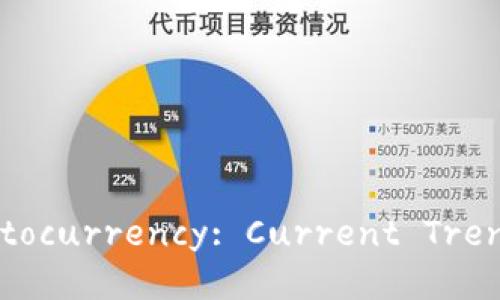As the world of finance evolves, cryptocurrency has emerged as a significant player in the global economy. Europe, being a diverse continent with varied regulatory frameworks and financial systems, has developed its own perspective on cryptocurrencies. As nations within Europe grapple with the implications of digital currencies, this article delves into current trends, regulatory frameworks, and the broader societal attitudes towards cryptocurrencies in Europe.
The adoption of cryptocurrencies in Europe has seen significant growth in recent years. This growth is attributed to several factors, including increased public awareness, technological advancements, and the pursuit of financial alternatives in the wake of economic uncertainty. Many European countries are witnessing a rise in the number of cryptocurrency exchanges and businesses catering to digital currency enthusiasts.
However, with growth comes the need for regulation. The European Union (EU) has been actively working on establishing a coherent regulatory framework for cryptocurrencies. This effort is crucial to balance innovation with consumer protection, preventing financial crimes, and ensuring the stability of financial markets. In this context, the EU has proposed the Markets in Crypto-Assets (MiCA) regulation, intended to create a unified approach to cryptocurrency regulation across member states.
Furthermore, the European Central Bank (ECB) has been closely monitoring the rise of cryptocurrencies, examining their impact on monetary policy and financial stability. The ECB's stance on cryptocurrencies is cautious yet open to the opportunities they present. This regulatory scrutiny reflects the broader global trend of financial authorities striving to understand and manage the risks associated with digital assets.
In the coming sections, we will explore some common questions related to Europe's stance on cryptocurrencies, addressing regulatory frameworks, adoption trends, and the cultural factors influencing these digital assets.
What is the current regulatory framework for cryptocurrencies in Europe?
The regulatory framework for cryptocurrencies in Europe is in a state of evolution. As of 2023, the European Union is working on the Markets in Crypto-Assets (MiCA) proposal, aiming to create a harmonized regulatory environment for digital currencies across all member states. This regulation seeks to provide clarity on issues such as token offerings, exchange operations, and stablecoins. MiCA's primary goal is to protect consumers and investors while promoting innovation within the crypto market.
In addition to MiCA, individual countries within Europe have developed their regulatory approaches to cryptocurrencies. For example, Germany has established a licensing system for crypto exchanges, while France has implemented a comprehensive regulatory framework to authorize and supervise digital asset service providers. Furthermore, countries like Malta and Switzerland have positioned themselves as crypto-friendly jurisdictions, attracting startups and companies looking for a stable regulatory environment.
Overall, the EU's regulatory efforts reflect a balance between fostering innovation in the blockchain space and ensuring that adequate safeguards are in place to protect the rights of consumers and maintain the integrity of financial systems. As the EU continues to refine its regulatory stance, it is likely that the approaches of individual countries will also evolve, with the aim of responding effectively to the rapidly changing landscape of cryptocurrency.
How is cryptocurrency adoption trending in European countries?

Cryptocurrency adoption across Europe varies significantly by country. According to recent studies, countries like Germany, the Netherlands, and Switzerland have shown a high level of interest and adoption in cryptocurrencies. In Germany, for instance, cryptocurrencies are considered "units of account," allowing them to be used for tax purposes. The German population exhibits a robust familiarity with Bitcoin and other digital currencies, which has facilitated a favorable environment for businesses and exchanges.
Scandinavia, particularly Sweden and Norway, is also witnessing notable cryptocurrency adoption. Sweden has been exploring the concept of a central bank digital currency (CBDC), known as the e-krona, which reflects the government’s acknowledgment of digital currencies’ potential benefits and challenges. At the same time, the general populace is increasingly engaging with cryptocurrencies, further supported by a strong technological infrastructure.
Conversely, countries like Bulgaria and Romania are still grappling with regulatory uncertainties, impacting the pace of cryptocurrency adoption. However, there is a growing desire among individuals in these regions to engage with digital assets as alternatives to traditional banking systems, especially amid economic turbulence and inflationary pressures. Despite these differences, the overall trend in Europe indicates a growing acceptance of cryptocurrencies as viable financial instruments.
What role does the European Central Bank play in the crypto landscape?
The European Central Bank (ECB) plays a pivotal role in shaping the cryptocurrency landscape in Europe. As the main monetary authority for the Eurozone, the ECB is responsible for maintaining price stability and overseeing the financial system. Its growing interest in cryptocurrencies has sparked debates regarding the potential impact of digital assets on monetary policy and overall financial stability.
One of the key functions of the ECB is to conduct research on the implications of cryptocurrencies and blockchain technology. The ECB has published various reports analyzing the risks and opportunities presented by digital currencies. For instance, the ECB has voiced concerns over the volatility of cryptocurrencies, their potential to facilitate illegal activities, and the challenges they pose to traditional banking systems.
In recent years, the ECB has also been exploring the concept of a central bank digital currency (CBDC). A digital Euro could serve as a stable and government-backed alternative to private cryptocurrencies, providing the benefits of digital transactions while maintaining regulation and consumer protection. The discussion around a digital Euro signifies the ECB's recognition of the need to adapt to the evolving financial landscape shaped by technological innovations.
Overall, the ECB reflects a cautious yet proactive stance in engaging with cryptocurrencies, striving to balance innovation with the responsibilities of safeguarding the financial system and protecting consumers.
What are the societal attitudes towards cryptocurrencies in Europe?

Societal attitudes towards cryptocurrencies in Europe are diverse and often shaped by cultural, economic, and historical factors. In regions with a strong banking heritage, such as Germany and France, there is a mix of skepticism and curiosity about digital currencies. Some consumers view cryptocurrencies with caution due to their association with unregulated financial activities, while others express enthusiasm for the potential of blockchain technology to democratize finance and provide greater accessibility to underserved populations.
Younger generations, particularly millennials and Gen Z, are generally more open to using cryptocurrencies. They are attracted to the idea of decentralized finance (DeFi) and the empowerment that comes with managing their own financial assets without intermediaries. Crowdfunding through Initial Coin Offerings (ICOs) or token sales is also gaining traction among these demographics, as they seek innovative ways to support projects aligned with their values.
In contrast, older generations, still accustomed to traditional banking practices, may exhibit more resistance to the adoption of cryptocurrencies. Their hesitance stems from a lack of understanding of how digital currencies work and concerns regarding security and volatility. However, as educational initiatives grow and more public figures advocate for the adoption of cryptocurrencies, perceptions are gradually shifting across all age groups.
Moreover, the events of the COVID-19 pandemic have intensified interest in alternative financial systems, leading to more discussions about the benefits of cryptocurrencies. The pandemic prompted many individuals to reconsider their financial strategies, and some have turned to cryptocurrencies as a hedge against inflation and uncertainty. As more people engage with digital currencies and gain experience, societal attitudes are likely to continue evolving in favor of broader acceptance.
In conclusion, Europe's approach to cryptocurrency is a reflection of its varied regulatory environments, adoption trends, and societal attitudes. The balance between fostering innovation and ensuring consumer protection is paramount as the continent navigates this rapidly changing landscape. With ongoing discussions around regulation and the potential for digital currencies to shape the future of finance, Europe's engagement with cryptocurrency is likely to deepen in the coming years.